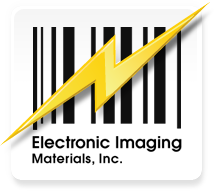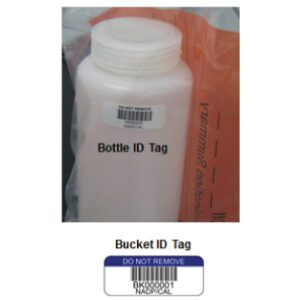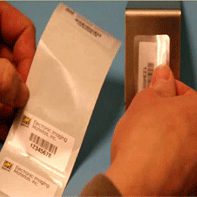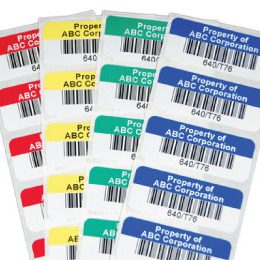In laboratories, waste comes in all shapes and sizes. Some materials are harmless, while others pose serious risks to people and the environment. Keeping track of laboratory waste can be challenging, especially when there are strict rules to follow. This is where barcode labels come in.
Keep reading to learn more about how barcode labels support good laboratory waste management, including what rules labs must follow, how barcode labels track waste, and more.
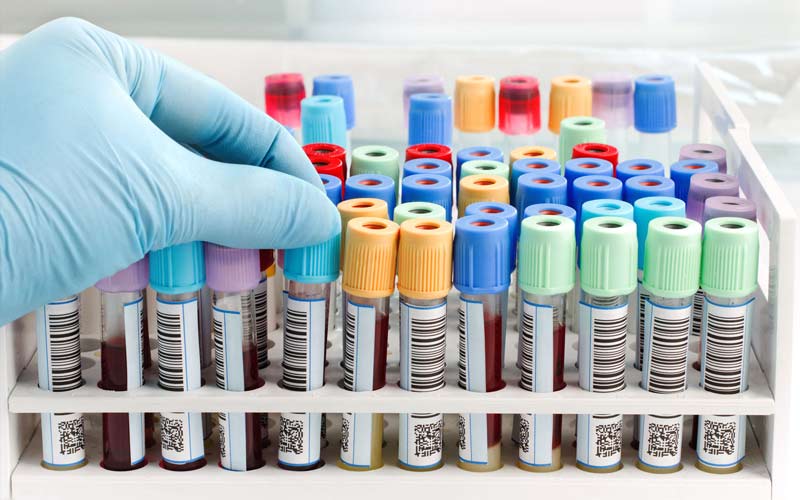
The Importance of Laboratory Waste Management
Laboratories produce many types of waste. Some are easy to handle, like paper towels, while others are toxic chemicals, sharp objects, or infectious materials. Poor management of this waste can lead to accidents, harm to the environment, and heavy fines for the lab. To avoid such problems, laboratories must use careful and organized methods for waste handling. This is where the idea of “laboratory waste management” becomes essential.
Good laboratory waste management includes sorting waste, labeling it, recording how much is produced, and making sure it is disposed of properly. By doing this, labs protect their workers, the community, and the planet. They also avoid breaking the law, which can lead to costly penalties. Tracking waste is often the hardest part. With so many containers and substances, it’s easy to lose track. That’s why something as simple as a barcode label can make a big difference.
What Environmental Regulations Apply to Laboratory Waste Management?
In many countries, laboratories must follow strict environmental rules. In the United States, the Environmental Protection Agency (EPA) sets standards for handling hazardous waste. Labs must store, treat, and dispose of this waste in ways that do not harm the environment or human health. If a lab fails to do this, it can face large fines or even be shut down.
Across the globe, many labs also look to international standards like ISO 14001. ISO 14001 certified companies show they meet high standards for environmental management. This standard encourages labs to set goals for reducing waste and improving their environmental impact. By meeting these standards, labs show they are serious about protecting the environment.
The Role of Barcode Labels in Meeting Environmental Rules
A barcode label is a simple but powerful tool. When placed on waste containers, it helps track every item from start to finish. Barcode labels store key information: what the waste is, when it was produced, and where it should go. A worker can scan the label and instantly know if the waste is hazardous, how it must be stored, or if special steps are needed to dispose of it.
By using barcode labels, labs can create a digital record of their waste. This record makes it easier to prove compliance with rules. For example, if the EPA or another group comes to inspect the lab, the lab can quickly show a report of what waste they generated and how they disposed of it. This reduces the chance of errors or missing data, making audits smoother and faster.
What’s Considered Hazardous vs. Non-Hazardous Waste Tracking?
Not all waste is the same in a lab. Some waste is harmless, like clean glass or plastic. Other waste is dangerous, like chemical solvents, acids, or biohazardous materials. Treating both kinds of waste the same way can be risky and expensive. With a barcode label on each container, labs can easily separate hazardous from non-hazardous waste.
For hazardous waste, extra steps are needed. Barcode labels can include codes or symbols to flag these materials. Workers scanning the barcode know right away that special handling is required. This helps prevent mistakes, like mixing hazardous materials with regular trash. It also ensures that harmful waste is stored safely until it can be removed by a certified disposal company. On the other hand, non-hazardous waste can be tracked and removed more quickly, freeing up storage space and reducing confusion.
There are many labeling mistakes that can set your barcode labeling strategy off-track. Learn what they are.
The Best Ways to Improve the Tracking of Laboratory Waste
Instead of relying on written notes or memory, workers can scan items to record movements in real time. Here’s how it works:
- Identification at the Source: When waste is created—say, a used chemical container—it gets a barcode label. This label might include the name of the chemical, its hazard class, and the date it was generated.
- Digital Record Keeping: Each time the waste moves, the barcode is scanned. Whether it moves from a lab bench to a storage room, or from storage to a disposal truck, the scan updates the digital record.
- Instant Data Access: At any point, managers can pull up information on the waste. They can see how long it’s been stored, if it’s nearing a disposal deadline, or if it needs special treatment. This reduces guesswork and speeds up decision-making.
- Accurate Reporting: When it’s time for an inspection or audit, the lab can produce a detailed report. This report shows that the lab is following rules and ensures that the waste is handled correctly. This level of detail builds trust and shows a commitment to environmental compliance.
Benefits of Using Barcode Systems for Environmental Compliance
Using a barcode label system for waste management helps labs in several ways:
- Accuracy: By scanning instead of writing, the risk of errors drops. Workers are less likely to mix up containers or misread labels.
- Speed: Scanning barcodes is much faster than writing down information. This saves time and allows workers to focus on their main tasks.
- Data Tracking: Barcode labels allow labs to store all waste information in one place. Managers can quickly see if the lab is producing more waste than normal or if certain areas need better waste reduction strategies.
- Better Decision-Making: With clear data, labs can plan more effectively. They can set goals to reduce hazardous waste, find better disposal methods, or improve storage procedures.
- Easier Audits: Inspectors want to see proof that waste is managed correctly. Barcode records are easy to share and understand, making inspections less stressful.

Greg D. | Hologic
“EIM receives the “Label Vendor of the Year” award for the best label in a label eval drama. I wish all of the customers used labels this nice.“
Can Barcode Labels Help Laboratories Meet ISO 14001 Standards?
ISO 14001 sets guidelines for environmental management. It encourages organizations to understand their impact on the environment and take steps to reduce it. Barcode label systems fit well into these guidelines. By using barcode labels, labs create a detailed record of waste. They can track improvements over time, set goals to reduce waste, and show real progress.
This aligns with the spirit of ISO 14001, which is all about continuous improvement. ISO 14001 certified companies use records to prove they are meeting standards. Barcode labels make these records detailed and dependable. Over time, the data from barcode labels can help labs adjust their methods, cut down on unnecessary waste, and show that they are meeting their environmental goals.
Steps to Implementing a Barcode Label System
For a lab to start using barcode labels effectively, it needs a clear plan. Here are some basic steps:
- Assess Current Practices: Look at how the lab currently manages waste. Where are the biggest gaps? What waste is produced most often?
- Select Proper Materials: Choose barcode labels that can handle the lab’s environment. For a cold or wet setting, waterproof labels might be needed. For areas with harsh chemicals, look for labels designed to resist corrosion.
- Train Staff: Teach workers how to scan and record waste movements. Show them why accurate tracking matters and how it helps the lab meet environmental goals.
- Set Goals and Metrics: Decide what success looks like. Maybe the lab wants to reduce hazardous waste by a certain percentage or improve the speed of disposal. With barcode labels, these goals become easier to measure.
- Review and Improve: Over time, analyze the data collected. Are you meeting your targets? If not, consider new ways to improve waste handling. Continue training staff and upgrading systems as needed.
The Role of a Trusted Partner in Barcode Labeling
While barcode labels are simple tools, choosing the right partner can make a huge difference. A skilled partner, like Electronic Imaging Materials, can help labs pick the right materials and advise them on best practices. This includes providing waterproof labels for wet conditions or specialized options suited for harsh chemicals, as well as offering insights on better integrating barcodes into existing systems.
Strong partners also offer ongoing support, recognizing that environmental compliance changes over time. Staying informed about new rules from agencies like the EPA makes it easier to adjust labeling strategies as needed. With expert guidance, labs can remain ahead of the curve, meeting current standards and preparing for future challenges.
Key Takeaways
- Barcode labels help labs track and manage waste more accurately and efficiently.
- Proper labeling supports compliance with environmental regulations, including those set by the EPA and ISO 14001.
- Using barcode systems leads to easier audits, reduced errors, and better decision-making.
- Partnering with a knowledgeable provider ensures that the chosen labels, materials, and processes meet evolving standards.
Streamline Your Lab’s Waste Tracking with EIM’s Custom Barcode Labels
Ready to improve your laboratory waste management process? Contact Electronic Imaging Materials for expert guidance and durable, custom barcode labels—get your free sample today!
